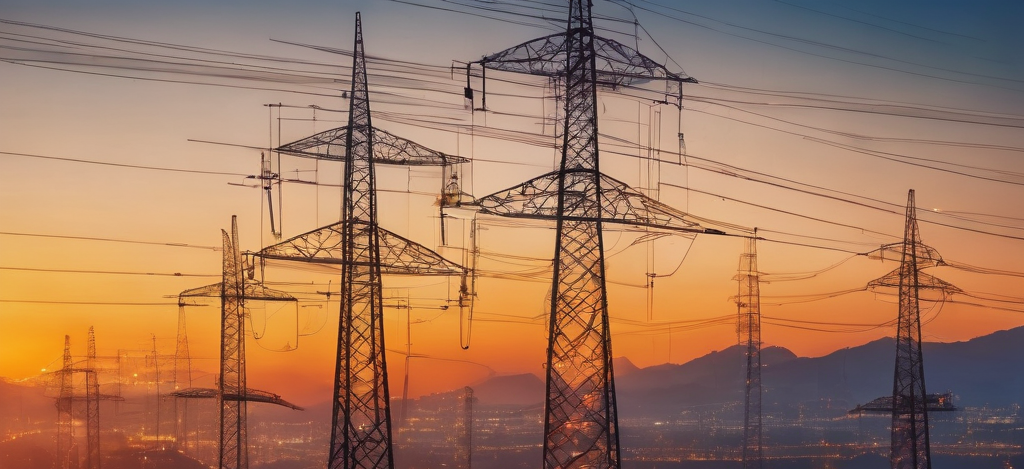Introduction:
In the era of interconnected technology, the Internet of Things (IoT) has emerged as a transformative force, weaving a digital fabric that connects the physical world. In this exploration, we venture into the realm where IoT and electrical devices converge, illuminating the myriad ways in which connectivity is redefining the landscape of power, efficiency, and innovation.

What is IoT (Internet of Things) in Electrical Devices:
The Internet of Things (IoT) refers to the network of physical objects, devices, vehicles, buildings, and other items embedded with sensors, software, and connectivity, enabling them to collect, exchange, and act upon data. The goal of IoT is to create a seamless, intelligent, and interconnected environment where these “things” can communicate with each other, share information, and perform tasks autonomously, ultimately improving efficiency, productivity, and user experience.
Key Components & Fundamental Concepts of IoT:
Sensors and Actuators:
Sensors: IoT devices are equipped with various sensors to capture data from the physical world. Examples include temperature sensors, motion detectors, and cameras.
Actuators: These components enable IoT devices to take physical actions based on the data they receive. For instance, actuators could control the temperature of a smart thermostat or adjust the speed of a smart fan.
Connectivity:
Internet Connectivity: IoT devices are connected to the internet, allowing them to transmit and receive data. This connectivity can be wired or wireless, using technologies like Wi-Fi, cellular networks, Bluetooth, Zigbee, or LoRaWAN.
Data Processing and Analytics:
Edge Computing: Some IoT devices process data locally on the device itself (edge computing) to reduce latency and improve response times.
Cloud Computing: Many IoT systems leverage cloud platforms for data storage, processing, and analytics. Cloud services enable scalability and accessibility of data from anywhere.
Communication Protocols:
MQTT (Message Queuing Telemetry Transport): A lightweight and efficient messaging protocol for communication between IoT devices and servers.
CoAP (Constrained Application Protocol): Designed for resource-constrained devices, CoAP is a lightweight and RESTful protocol.
HTTP (Hypertext Transfer Protocol): Traditional web protocol adapted for IoT communication.
Security and Privacy:
Device Authentication: Ensuring that only authorized devices can connect to the IoT network.
Data Encryption: Protecting data transmitted between devices and servers to prevent unauthorized access.
Access Control: Defining and enforcing permissions for accessing and interacting with IoT devices and data.
Interoperability:
Standardization: Promoting the use of common standards to ensure that devices from different manufacturers can communicate seamlessly.
Protocols and APIs: Implementing interoperable communication protocols and application programming interfaces (APIs) to enable integration between diverse IoT devices and platforms.
IoT Platforms:
Middleware: Software that facilitates communication and data management between devices and applications.
Application Enablement Platforms (AEPs): Tools that simplify the development and deployment of IoT applications.
Scalability:
Scalable Architectures: Designing IoT systems with architectures that can handle the growing number of devices and data.
Distributed Systems: Distributing tasks and data across multiple nodes to prevent bottlenecks and ensure scalability.
Energy Efficiency:
Low-Power Devices: Many IoT devices operate on battery power, necessitating energy-efficient design to extend battery life.
Power Harvesting: Utilizing energy from the environment, such as solar or kinetic energy, to power IoT devices.
What are IoT Devices & Applications of IoT Devices:
1. Smart Home Devices:
Understand with this short story from Jack’s Perspective:
Jack’s smart home adventure began with a forgotten lock. From afar, he secured his front door using his smartphone. Returning home, his smart thermostat welcomed him with the perfect warmth. Lights, music, and ambiance adjusted to his preferences. A glance at his smart fridge generated a shopping list. The evening movie triggered automatic dimming, and his smart couch adapted for comfort. Nighttime thirst? A voice command lit his path to the kitchen. Morning brought a smart mirror with weather updates and commute alerts. Jack’s IoT-powered home seamlessly blended convenience, security, and energy efficiency, making daily life effortlessly intelligent.
Example: Haier IoT Ecosystem
2. Industrial IoT (IIoT):
Understand with this short story from Emily’s Perspective:
Meet Emily, a factory manager revolutionizing operations with Industrial IoT (IIoT). During a business trip, she remotely monitored production through IIoT sensors. Spotting a potential issue, she adjusted machine settings on her smartphone, ensuring seamless production. Back at the factory, predictive maintenance alerts from connected machinery saved the day, preventing downtime. Energy-efficient IIoT systems optimized resource usage, reducing costs. Smart sensors tracked inventory levels, minimizing waste and streamlining supply chains. Emily’s factory embraced IIoT for real-time insights, predictive analytics, and operational efficiency, demonstrating how connected industrial devices transform traditional manufacturing into a smart and responsive ecosystem.
Example: Siemens IoT
Conclusion:
As we navigate the interconnected landscape of IoT in electrical devices, it becomes evident that the synergy between the digital and physical worlds holds the key to unprecedented possibilities. The journey has just begun, and the future promises innovations where connectivity empowers, enriches, and transforms our everyday devices.

